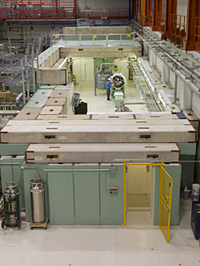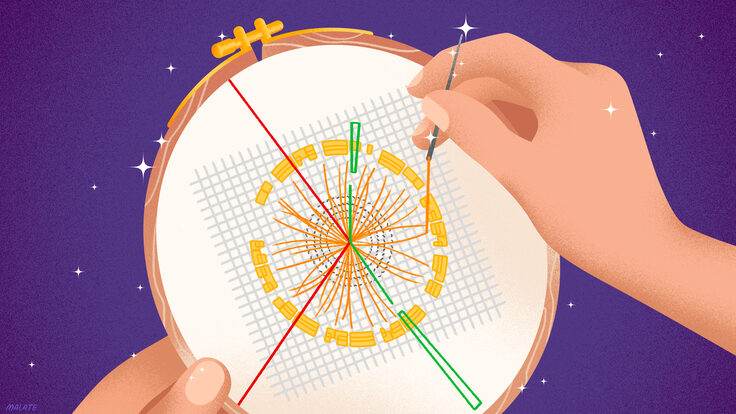Fermilab will use Recovery Act funds to expand its superconducting radio frequency test facility and make cryomodules to construct a prototype accelerator.
In August, the US Department of Energy announced that the American Recovery and Reinvestment Act will provide Fermilab with $52.7 million to test and develop superconducting radio-frequency (SRF) cavities, a key technology for next-generation accelerators and the future of particle physics. The funds provide a significant boost to the SRF program at Fermilab, allowing the laboratory to expand its test facilities and strengthen American manufacturing capabilities.
"The Recovery Act speeds up what we were doing and allows us to do things we wouldn't be able to do otherwise," said Bob Kephart, director for Fermilab's International Linear Collider program.
Fermilab will invest roughly 80 percent of the $52.7 million in stimulus funds in US industry.
"There has been lots of progress, but at this time, no US vendor is yet qualified to produce accelerator cavities of the quality needed for the proposed Project X or ILC," Kephart said. "The Recovery Act will advance funding to allow US industry to develop the capabilities they need to become competitive manufacturers of SRF components."
Plans call for Fermilab to purchase around 40 SRF cavities and other cryomodule components from US vendors, helping US industry develop the capabilities they need to become a competitive manufacturers of SRF components.
Fermilab will distribute a portion of the funds to upgrade existing SRF infrastructure at Argonne National Laboratory, Thomas Jefferson National Accelerator Facility, and SLAC National Accelerator Laboratory.
At Fermilab, in addition to ordering cavities, the stimulus funds will also go toward building a cryogenic plant at the New Muon Laboratory to cool cryomodules to minus 271 degrees Celsius. Other items Fermilab will purchase include a high-temperature oven and additional systems to test the capability and quality of SRF cavities. All of this infrastructure will enable Fermilab to evolve into one of the most advanced SRF R&D centers in the world.
SRF cavities have become the technology of choice for many proposed accelerator-based projects, including the proposed Project X, International Linear Collider, and a muon collider, because of their highly efficient ability to accelerate beams of particles. Physicists expect that SRF technology has potential applications in medicine, energy and material science.
Visit Fermilab's Recovery Act Web site.
This story was originally published in Fermilab Today Sept. 4.







